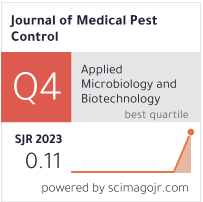Prediction study of arima-bpnn model in tuberculosis incidence rate
Abstract
Objective:
To develop and evaluate a hybrid forecasting model combining the Autoregressive Integrated Moving Average (ARIMA) and Backpropagation Neural Network (BPNN) for predicting the incidence rate of tuberculosis (TB), aiming to improve prediction accuracy and provide a scientific basis for disease control.
Methods:
Historical TB incidence data were collected over a defined period. An ARIMA model was first established to capture linear patterns in the data. Residuals from the ARIMA model were then used to train a BPNN to model nonlinear components. The hybrid ARIMA-BPNN model’s predictive performance was compared with standalone ARIMA and BPNN models using evaluation metrics such as Mean Absolute Percentage Error (MAPE), Root Mean Square Error (RMSE), and coefficient of determination (R²).
Results:
The ARIMA-BPNN hybrid model demonstrated superior prediction accuracy compared to individual models, effectively capturing both linear and nonlinear trends in TB incidence data. The model provided reliable short-term forecasts that closely matched actual incidence rates.
Conclusion:
The ARIMA-BPNN hybrid model is an effective tool for predicting tuberculosis incidence rates, offering enhanced accuracy and utility for public health planning and early warning systems.
Full text:
PDFReferences
Xu H., Chong Y., Liu Y., Cao W., Xu D., Zhang J., Zhao J.



